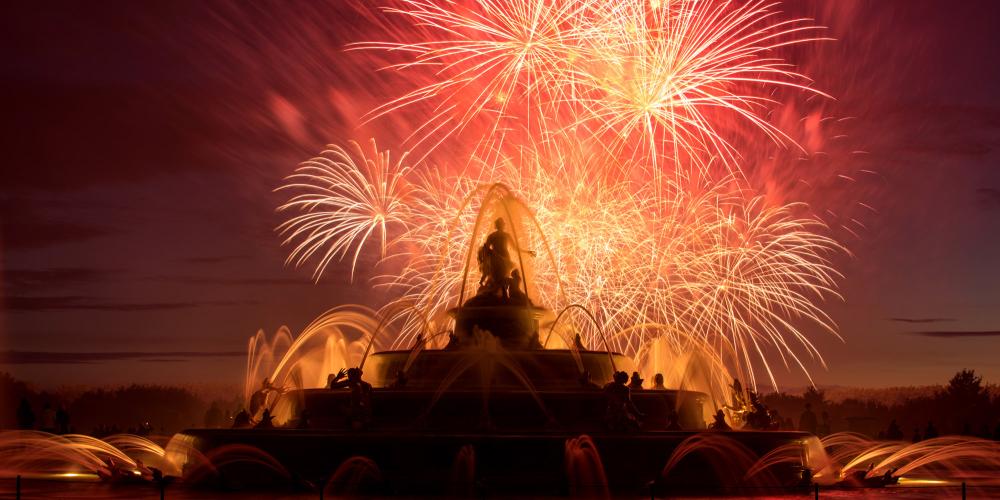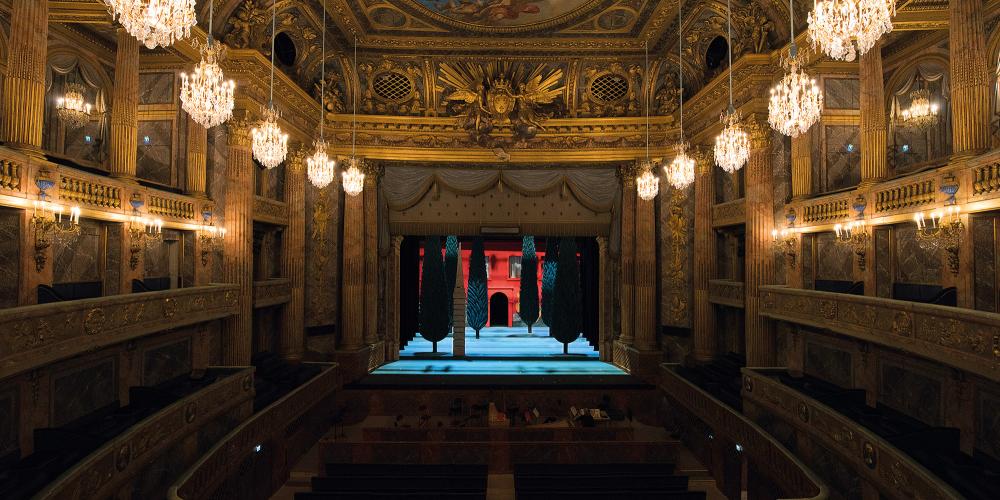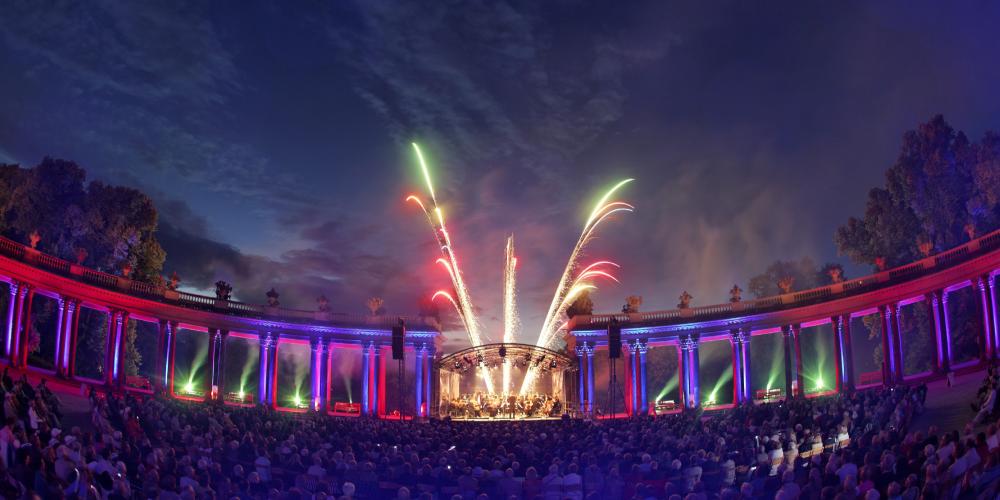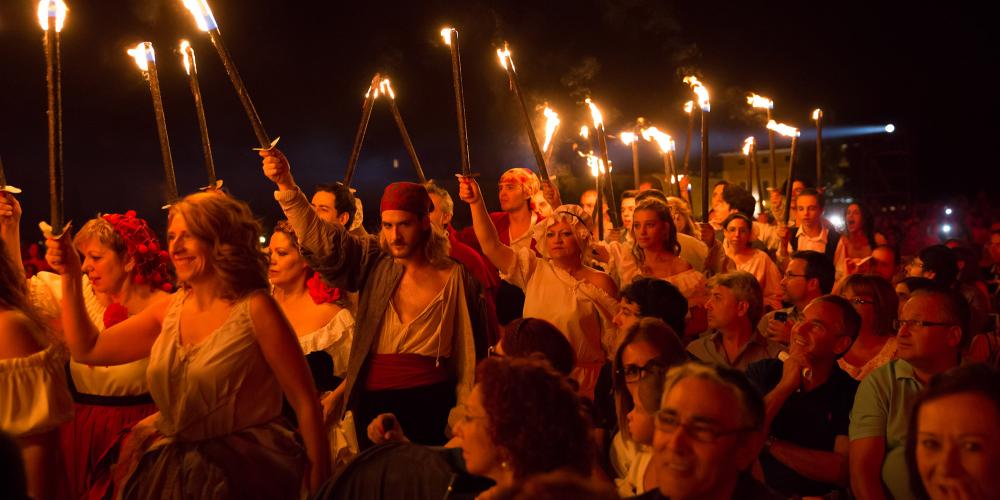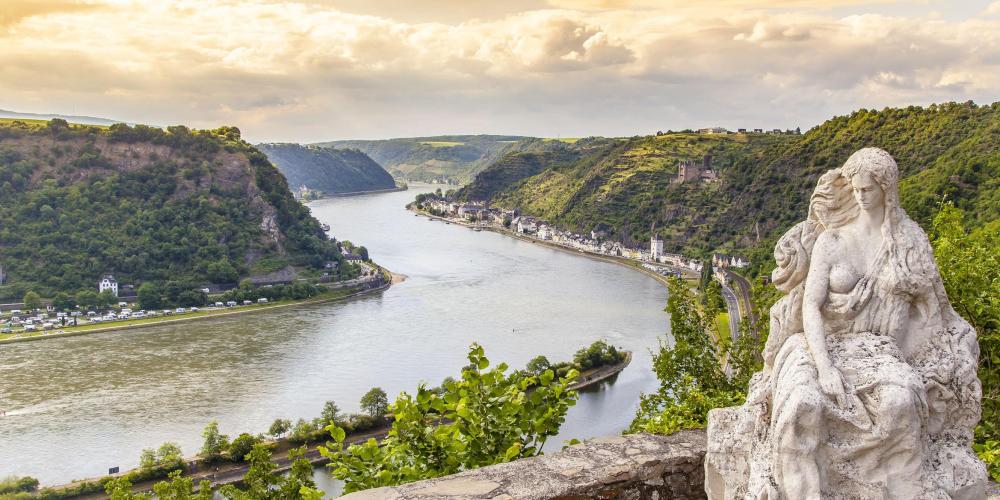Explore Europe to the rhythm of classical music

Itinerary - 8 days
Day 1 - Aranjuez, Spain
After flying into Madrid Airport, take the 1 hour train trip to Aranjuez with the Cercanias. You can also take the Strawberry train and go back in time to the 19th century. Appreciate the calm of the Tagus river while discovering along the water the royal gardens and the surroundings of the palace. Declared a royal site of the Spanish crown at the end of the 15th century, the splendid parks and gardens of Aranjuez have bewitched the court but also the greatest composers. Stroll through the avenues that inspired Stanislas Verroust's piece for oboe and piano, Aranjuez, fantasy on Spanish motifs. The famous Spanish composer Joaquin Rodrigo paid tribute to the landscape in his renowned concerto for guitar and orchestra, which earned him the title of Marquis de los Jardines de Aranjuez. A true hymn to Aranjuez, this concerto has been widely reinterpreted, notably by Nana Mouskouri with the song Aranjuez mon amour. It has since been featured in many international films, and performed by famous musicians around the world such as Miles Davis and Paco de Lucia. In the warmer seasons, you can take a musical tours around Aranjuez by boat. For the more adventurous types, there are also canoe trips. Take advantage of the evening to taste the tapas, strawberries, asparagus and local wine - which are some of the gourmet specialities of the region, in the restaurants and taverns of the city.
Day 2 - Aranjuez, Spain
Explore the Royal Palace that has hosted the greatest artists of the Spanish court. Its restoration in 2004 has uncovered many hidden treasures of the 19th century decor of the palace. Then travel through time from the Renaissance groves of the Island Gardens in the 18th century in the Prince's Garden. End the day by strolling in the streets of Aranjuez where in March 1808 took place the famous mutiny of Aranjuez, which for many marked the end of the Ancien Régime in Spain. If you visit Aranjuez in September, you may be able to catch the Aranjuez Mutiny festivities. Finally, do not miss the opportunity to attend one of the many concerts or performances offered by the Isabelle Farnèse Cultural Centre and the Real Carlos III Theatre in Aranjuez. In May, the Aranjuez Early Music Festival is a highlight for classical music lovers.
Day 3 - Versailles, France
Fly to Paris and take the RER C line to the Palace and Park of Versailles. As the royal residence between Louis XIV and the Revolution, Versailles represents a masterpiece of French art in the 17th century. Visit the rooms of the palace and follow in the footsteps of the greatest composers of the French court such as Jean-Baptiste Lully, Jean-Philippe Rameau or Christophe Willibald Gluck, the music teacher and favourite composer of Queen Marie-Antoinette. Take advantage of the rest of the day to visit the gardens of Versailles, which, between March and October, are brought to life by the rhythm of baroque music. Every Saturday evening during summer, the groves and fountains are decorated with a thousand lights, surreal illuminations, and the Sun King's music follows you as you stroll. At the end of the evening, a grand fireworks display is the crowning glory. The gardens are also unique experiences in winter, when they house contemporary art installations that can be visited free of charge. After a walk in the city, discover the French cuisine and its traditions, which were inscribed on the List of the Intangible Cultural Heritage of Humanity in 2010.
Day 4 - Versailles, France
Cross the park directly to reach the Petit et Grand Trianon or the Hameau de la Reine. Discover Marie-Antoinette's personal theatre with the guided tour "Stage effects at the Queen's Theatre". Hidden in the greenery of the garden of Trianon, it still preserves the old machinery allowing to change the decoration of the rooms and operas presented exclusively to the guests of the queen. Crown your day by attending one of the shows staged in the Royal Opera of Versailles.
Day 5 - Upper Middle Rhine Valley, Germany
After flying from Paris to Frankfurt, take the Deutsche Bahn direct to the Rhine Valley. If you're hungry, you can feast in one of the restaurants or stay in one of the hotels that specialises in World Heritage, the Upper Middle Rhine Valley region and its local specialities. This mythical valley is known throughout the world thanks to numerous poems, songs or operas. The mythical nymphs and their magic gold served as muses for Richard Wagner's opera cycle The Nibelung Ring. Feel the spirit of this famous river on a hike, bike ride or cruise. Continue your visit to the Loreley centre, named after the rock that rises 132 metres above the Rhine and where the river is the narrowest. The legend of Loreley, a beautiful singing young maiden who distracted fishermen as they passed, has inspired a multitude of artists including Johann Strauss, Franz Lisz, Alfredo Catalani and George Gershwin and Paul McCartney.
Day 6 - Upper Middle Rhine Valley, Germany
Explore one of the 40 castles along the Rhine. They all embody the Rhineland romanticism depicted in 19th century art. Do not miss the Ehrenbreitstein fortress and the cable car in Koblenz; the Stolzenfels Palace in Koblenz-Stolzenfels; Marksburg Castle in Braubach or Pfalzgrafenstein Castle in Kaub. Continue your journey with Friedrich Bastian, the winemaker and opera singer, he will make you appreciate the best wines of his cellar through the myths and legends of the Rhine Valley.
Day 7 - Potsdam, Germany
You can easily reach the Palaces and Parks of Potsdam from the Rhine Valley by air or rail. Start your stay with a visit to the royal complex of Potsdam, including the Sanssouci Palace. Built to escape the bustle of Berlin, Frederick the Great invited the most famous composers to visit him here. An avid music lover, he himself composed 121 sonatas for flute, a symphony and much more. It was in this palace that Frederick II challenged Johann Sebastian Bach to improvise a fugue for six voices and Bach's Musical Offering was the result. The palace gardens host the Music Festival Potsdam Sanssouci each year, with baroque opera, a music night of the allies in Cecilienhof, a Ball of the People in Sanssouci and much more. In 2018, artists from more than 30 countries will celebrate the cross-border migrations of the arts and the linking of regional music cultures for the European Year of Cultural Heritage 2018.
Day 8 - Potsdam, Germany
Once you have visited the many outstanding palaces and gardens that Potsdam has to offer, you can visit the former Russian colony of Alexandrovka, just north of the Baroque city centre. In this village, erected by Frederick William III in memory of his dear friend the Czar Alexander I, lived the remaining twelve families of the singers of the choir of Frederick William III. The green spaces were meant to offer Russian singers a special atmosphere for music and leisure. Discover Russian culture and gastronomy in the museum and tearoom. In the afternoon or evening, you can take the time to discover Potsdam's lively city centre, and catch a show at one of the city's many theatres, such as the Nikolaisaal Potsdam or the Hans Otto Theater.
Ideas to extend your stay:
This itinerary was designed as a guide - if you have the time, we recommend you extend your stay in these incredible World Heritage destinations. They are also located next to some of Europe's top music capitals.
Madrid: The city resonates to the rhythm of music. You will discover the richness of Spanish musical culture like flamenco, which was inscribed on the Intangible World Heritage List in 2010. The city has many theatres and for a royal musical experience, you can catch a performance at the Royal Theatre, located next to the Royal Palace. The cultural programme of the Communidad de Madrid offers up to date information on events and performances. There are also other cultural World Heritage sites in the region worth visiting, such as the Monastery and Site of the Escurial and the University and Historic Precinct of Alcalá de Henares.
Paris: With two renowned opera halls and nearly 140 concert halls, Paris also offers a huge range of options for music lovers. You will find all the programming dedicated to classical music on the website of the Paris Tourist Office. If you're in Paris on the 21st of June, you will see the city come alive when it celebrates the 'Fête de la Musique' (Music Day). For one night only, the city's monuments and streets host concerts featuring muscial artists and performers from around the world.
London: Jump on the Eurostar from Paris and you will be in London in less than 2 hours, home to some of the world's most famous music venues and precincts. The World Heritage listed Royal Botanic Gardens, Kew, hosts an annual festival 'Kew the Music' in July each year. Take a picnic and enjoy the summer evenings to a variety of music from classical, blues, pop or rock'n roll.
Berlin: Berlin is a melting pot of European music. Whatever the season, you'll find what you're looking for, as there are a huge range of venues and performances to choose from. Classical music is featured in one of Berlin's most beautiful squares, the Gendarmenmarkt, at the Classic Open Air Festival - one of the city's biggest festivals of the year.
